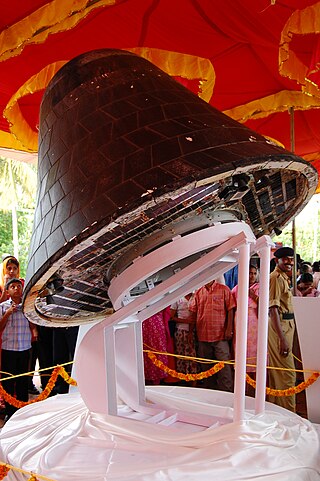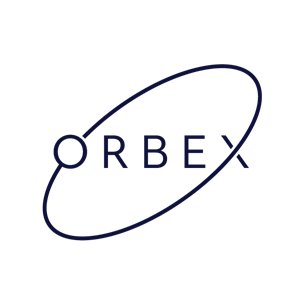Human spaceflight programs have been conducted, started, or planned by multiple countries and companies. Until the 21st century, human spaceflight programs were sponsored exclusively by governments, through either the military or civilian space agencies. With the launch of the privately funded SpaceShipOne in 2004, a new category of human spaceflight programs – commercial human spaceflight – arrived. By the end of 2022, three countries and one private company (SpaceX) had successfully launched humans to Earth orbit, and two private companies had launched humans on a suborbital trajectory.

A spaceplane is a vehicle that can fly and glide like an aircraft in Earth's atmosphere and maneuver like a spacecraft in outer space. To do so, spaceplanes must incorporate features of both aircraft and spacecraft. Orbital spaceplanes tend to be more similar to conventional spacecraft, while sub-orbital spaceplanes tend to be more similar to fixed-wing aircraft. All spaceplanes to date have been rocket-powered for takeoff and climb, but have then landed as unpowered gliders.

Private spaceflight refers to spaceflight activities undertaken by non-governmental entities, such as corporations, individuals, or non-profit organizations. This contrasts with public spaceflight, which is traditionally conducted by government agencies like NASA, ESA, or JAXA.

Space Exploration Technologies Corporation, commonly referred to as SpaceX, is an American spacecraft manufacturer, launch service provider and satellite communications company headquartered in Hawthorne, California. The company was founded in 2002 by Elon Musk with the goal of reducing space transportation costs and ultimately developing a sustainable colony on Mars. The company currently produces and operates the Falcon 9 and Falcon Heavy rockets along with the Dragon and Starship spacecraft.

A reentry capsule is the portion of a space capsule which returns to Earth following a spaceflight. The shape is determined partly by aerodynamics; a capsule is aerodynamically stable falling blunt end first, which allows only the blunt end to require a heat shield for atmospheric entry. A crewed capsule contains the spacecraft's instrument panel, limited storage space, and seats for crew members. Because a capsule shape has little aerodynamic lift, the final descent is via parachute, either coming to rest on land, at sea, or by active capture by an aircraft. In contrast, the development of spaceplane reentry vehicles attempts to provide a more flexible reentry profile.

Foton is the project name of two series of Russian science satellite and reentry vehicle programs. Although uncrewed, the design was adapted from the crewed Vostok spacecraft capsule. The primary focus of the Foton project is materials science research, but some missions have also carried experiments for other fields of research including biology. The original Foton series included 12 launches from the Plesetsk Cosmodrome from 1985 to 1999.

The Space Capsule Recovery Experiment is an Indian experimental spacecraft which was launched at 03:53 UTC on January 10, 2007, from Sriharikota by the Indian Space Research Organisation (ISRO). The launch was conducted using the C7 launch of the PSLV rocket, along with three other satellites. It remained in orbit for 12 days before re-entering the Earth's atmosphere and splashing down into the Bay of Bengal at 04:16 UTC on January 22.

The Young Engineers' Satellite 2 (YES2) was a 36 kg student-built tether satellite that was part of ESA's Foton-M3 microgravity mission. The launch of the Russian Foton-M3 occurred on September 14, 2007, at 13:00 (CEST) by a Soyuz-U launcher lifting off from the Baikonur Cosmodrome in Kazakhstan. Foton-M3 returned successfully to Earth on 26 September 2007, landing in Kazakhstan at 7:58 GMT. The YES2 project was carried out by Delta-Utec SRC and supervised by the ESA Education Office and was nearly entirely designed and build by students and young engineers.

The Boeing Starliner is a class of partially reusable spacecraft designed to transport crew to the International Space Station (ISS) and other low-Earth-orbit destinations. It is manufactured by Boeing, with the Commercial Crew Program (CCP) of NASA as the anchor customer. The spacecraft consists of a reusable crew capsule and an expendable service module.

The Space Capsule Recovery Experiment II was an Indian re-entry demonstration experiment designed by the Indian Space Research Organisation (ISRO). It was a follow-on mission of SRE-1 which was successfully completed in January 2007. It was supposed to test some of the critical technologies for the Indian human spaceflight programme. The second mission was to carry three experiments devoted to biological science and an improved isothermal furnace with 1000 °C temperature to carry out materials science experiments. As of August 2016, SRE-2 is not mentioned in the ISRO official page.

Nanoracks LLC is a private in-space services company which builds space hardware and in-space repurposing tools. The company also facilitates experiments and launches of CubeSats to Low Earth Orbit.

The following is a timeline of important events in the history of private spaceflight, including important technical as well as legislative and political advances. Though the industry has its origins in the early 1960s, soon after the beginning of the Space Age, private companies did not begin conducting launches into space until the 1980s, and it was not until the 21st century that multiple companies began privately developing and operating launch vehicles and spacecraft in earnest.

Orbital Express Launch Ltd., or Orbex, is a United Kingdom-based aerospace company that is developing a small commercial orbital rocket called Prime. Orbex is headquartered in Forres, Moray, in Scotland and has subsidiaries in Denmark and Germany. Its future launch complex, Sutherland spaceport, is being built on the A' Mhòine peninsula in the county of Sutherland, northern Scotland.

Starship is a two-stage super heavy-lift launch vehicle under development by SpaceX. As of May 2024, it is the largest and most powerful rocket ever flown. Starship's primary objective is to lower launch costs significantly via economies of scale. This is achieved by reusing both rocket stages, increasing payload mass to orbit, increasing launch frequency, creating a mass-manufacturing pipeline, and adapting it to a wide range of space missions. Starship is the latest project in SpaceX's decades-long reusable launch system development program and ambition of colonizing Mars.

Photon is a satellite bus based on Rocket Lab's kick stage.
Orbital Reef is an under development low Earth orbit (LEO) space station being designed by Blue Origin and Sierra Nevada Corporation's Sierra Space for commercial space activities and space tourism uses. Blue Origin has referred to it as a "mixed-use business park". The companies released preliminary concepts for the station on 25 October 2021. The station is being designed to support 10 persons in 830 m3 of volume. As of March 2022, the station was projected to be operational by 2027.
Space Forge is a British aerospace manufacturing company headquartered in Cardiff, Wales. Its focus is to develop reusable on-orbit fabrication capabilities to enable the novel production of semiconductors and alloys in microgravity.
Impulse Space was founded in 2021 by Tom Mueller, employee No.1 at SpaceX and engineer of the Merlin and Draco rocket engines that power the Falcon 9 and Dragon spacecraft. The company develops in-space transportation services for satellites that fly to Low Earth Orbit then need to reach other orbits.

NG-20 is the twentieth flight of the Cygnus robotic resupply spacecraft and its seventeenth flight to the International Space Station (ISS). It launched on 30 January 2024. It is contracted to Northrop Grumman under the Commercial Resupply Services II (CRS-2) contract with NASA. The capsule launched aboard a SpaceX Falcon 9 rocket.
The Exploration Company is a European spacecraft manufacturer. Based in Munich, Germany and Bordeaux, France, the company develops, manufactures and operates the Nyx space capsule for space agencies and space stations as well as both space and non-space companies in other industries. Although the company's first missions will be cargo missions, Nyx is designed to ultimately also be able to carry humans.















